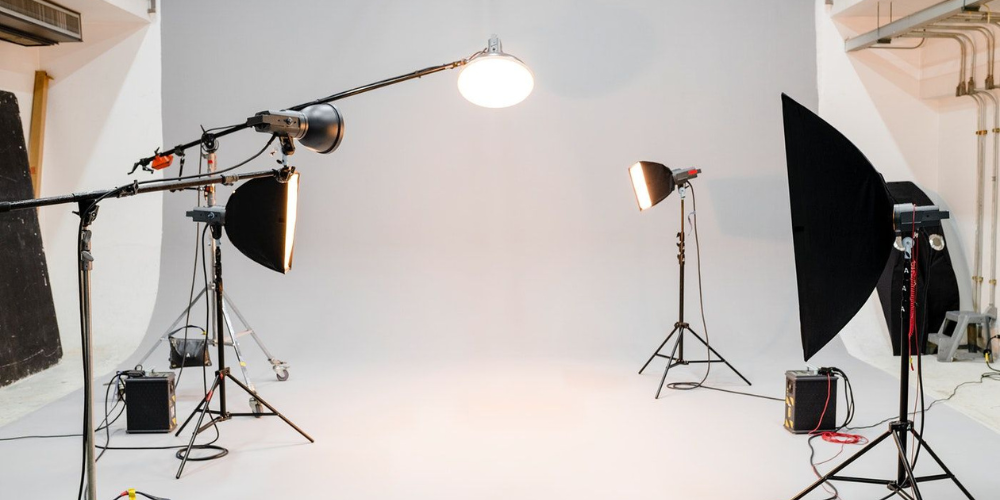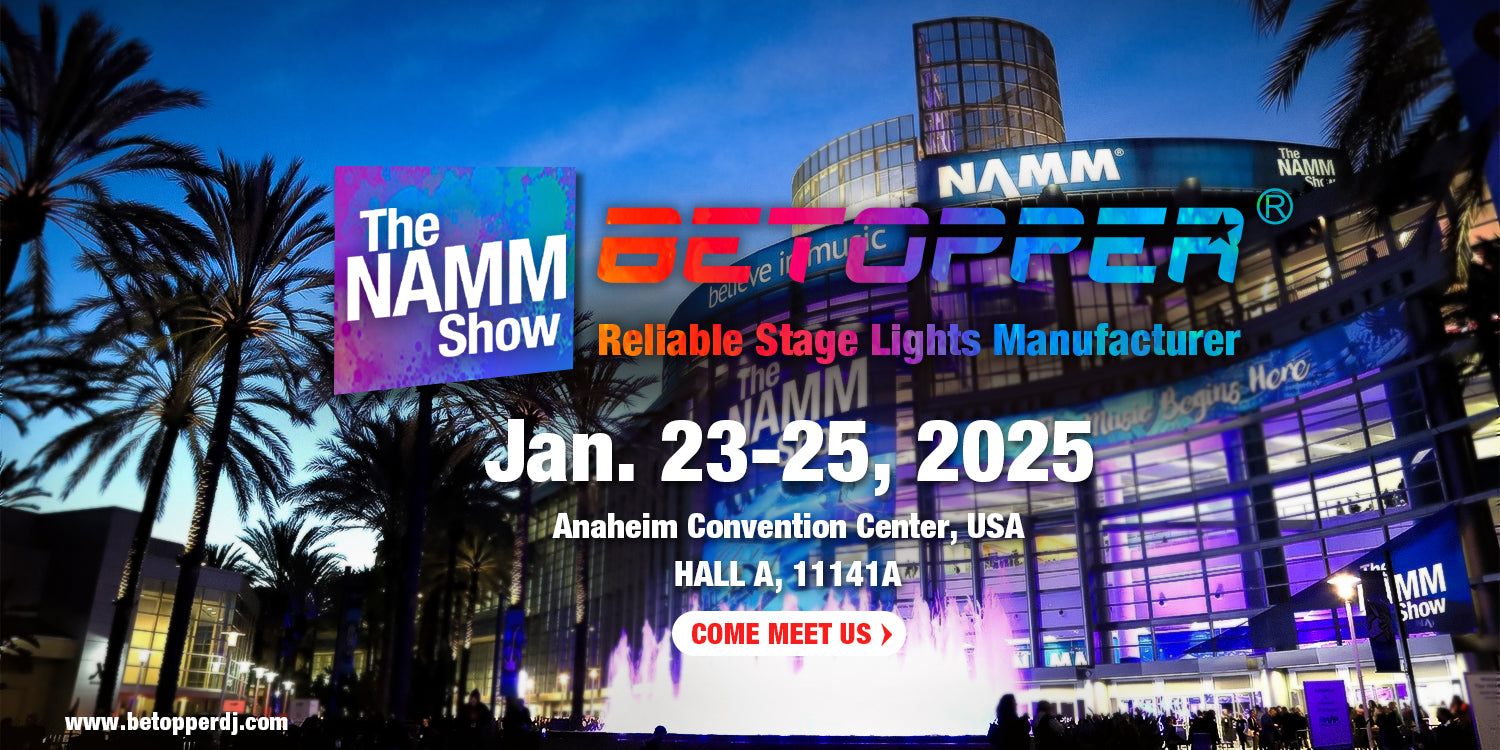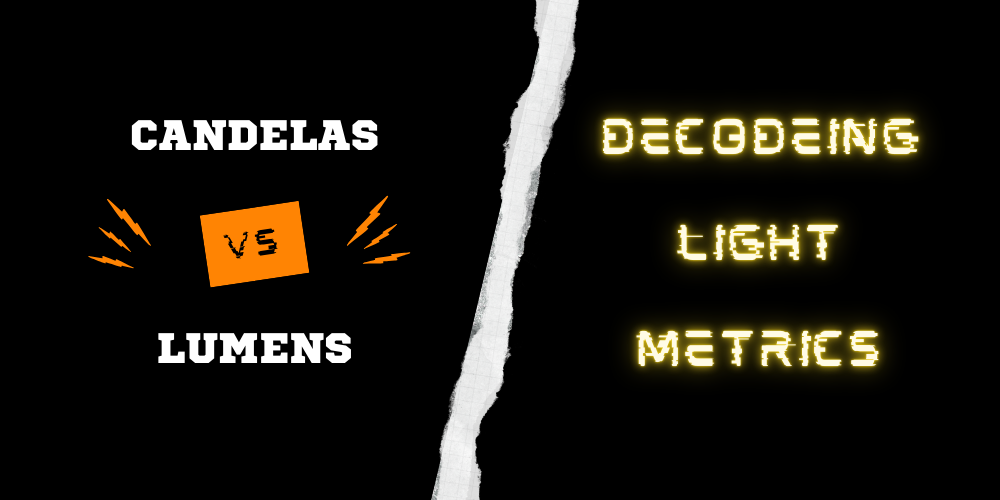Traditionnellement conçus pour les concerts, les théâtres et les événements, les éclairages de scène offrent des caractéristiques qui en font une option intéressante pour la photographie. Les éclairages de scène peuvent-ils réellement transformer un studio photo en un univers créatif merveilleux ?
Leur polyvalence, leurs effets d'éclairage dynamiques et leurs puissantes capacités d'éclairage pourraient potentiellement sublimer la qualité artistique des prises de vue en studio. Mais comment fonctionnent-ils dans un environnement de studio photo contrôlé ?
Voyons si les lumières de scène sont la solution d’éclairage créative que vous recherchez.
Lumières photographiques traditionnelles dans les studios photo
Dans les studios photo, les éclairages traditionnels sont spécialement conçus pour fournir un éclairage constant et contrôlé, permettant de capturer des images de haute qualité. Ces éclairages incluent souvent des options telles que des éclairages continus, des stroboscopes et des flashes, chacun répondant à des besoins différents.
Les éclairages continus, comme les panneaux LED ou les lampes tungstène, fournissent une source lumineuse stable, idéale pour les réglages en temps réel et les tournages vidéo. Les stroboscopes, quant à eux, produisent de puissants éclairs parfaitement synchronisés avec l'obturateur de l'appareil photo, pour des photos nettes et lumineuses.
Ce qui distingue ces éclairages, c'est leur précision et leur facilité de contrôle. La plupart des éclairages photographiques sont dotés de réglages de luminosité et de température de couleur, et sont compatibles avec divers modificateurs comme les boîtes à lumière, les parapluies et les réflecteurs.
Ces modificateurs aident à créer un éclairage doux et diffus qui flatte les sujets et minimise les ombres dures, ce qui en fait un incontournable pour la photographie de portrait, de produit et de mode.
Bien qu'ils ne présentent pas les effets dramatiques des lumières de scène, les éclairages photographiques traditionnels sont optimisés pour la fiabilité et l'éclairage précis requis dans les studios photo professionnels.
Lumières de scène dans les studios photo
Lumières de scène peuvent jouer un rôle unique dans les studios photo, offrant des possibilités créatives et une grande flexibilité d'éclairage. Contrairement aux éclairages photographiques traditionnels, les éclairages de scène offrent souvent un mélange de couleurs avancé, une intensité réglable et des effets dynamiques, qui peuvent ajouter une touche artistique et théâtrale aux prises de vue en studio.
Par exemple, les éclairages de scène à LED peuvent produire des couleurs vives ou des teintes subtiles, permettant aux photographes de créer des ambiances lumineuses ou des visuels thématiques. De plus, leur angle de faisceau réglable et leurs capacités de mise au point en font des outils polyvalents pour mettre en valeur des sujets spécifiques ou créer des ombres dynamiques.

Cependant, les éclairages de scène diffèrent des éclairages classiques de studio photo par leurs caractéristiques de puissance et leur production de chaleur. Bien qu'ils puissent fournir un éclairage puissant, les photographes doivent gérer soigneusement leurs réglages pour éviter les contrastes trop marqués ou la surchauffe du sujet.
L'utilisation de lumières de scène en combinaison avec des diffuseurs ou des boîtes à lumière peut aider à obtenir une lumière plus douce et plus flatteuse, ce qui en fait un choix pratique pour les séances photo créatives et professionnelles.
Peut-on utiliser des ampoules dans un studio photo ?
Bien sûr, les ampoules peuvent être utilisées en studio photo, mais leur efficacité dépend largement de la manière dont elles sont utilisées. Les ampoules domestiques standard, par exemple, peuvent ne pas fournir l'intensité ou la régularité nécessaires à la photographie professionnelle.
Cependant, les ampoules spécialisées, telles que les lampes fluorescentes compactes (lampes fluocompactes) ou des ampoules LED conçues pour la photographie peuvent offrir une alternative économique à l'éclairage de studio traditionnel. L'essentiel est d'associer ces ampoules à des modificateurs appropriés. L'utilisation d'une boîte à lumière ou d'un diffuseur avec les ampoules permet de contrôler les ombres prononcées et de créer un éclairage uniforme et flatteur.
De plus, opter pour des ampoules avec un indice de rendu des couleurs (IRC) élevé garantit une représentation précise des couleurs sur vos photos.Bien qu'elles n'offrent peut-être pas la même polyvalence que les éclairages de qualité professionnelle, les ampoules peuvent être une solution pratique pour les débutants ou pour les projets à plus petite échelle où la simplicité et l'abordabilité sont des priorités absolues.
Facteurs clés lors de l'utilisation de lumières dans les studios photo
Choisir et utiliser des éclairages dans un studio photo nécessite de prendre en compte plusieurs facteurs clés qui influencent directement la qualité de vos images. Voici les points les plus importants à retenir :
Luminosité et intensité
La luminosité de vos éclairages détermine la qualité de l'éclairage de votre sujet. Trop de lumière peut masquer les détails, tandis qu'une lumière insuffisante peut donner des images sous-exposées. Réglable luminaires vous permet d'affiner l'intensité, garantissant une exposition appropriée pour diverses conditions de prise de vue.
Température de couleur
La température de couleur influence l'ambiance et le réalisme de vos photos. Mesurée en Kelvin (K), les valeurs basses produisent des tons chauds, tandis que les valeurs élevées des tons plus froids. Choisir des éclairages à température de couleur réglable ou proches de la lumière naturelle (environ 5 600 K) contribue à l'homogénéité de vos images.
Diffusion de la lumière
Un éclairage trop intense peut créer des ombres disgracieuses et des reflets excessifs. L'utilisation de diffuseurs, de boîtes à lumière ou de parapluies permet de répartir la lumière uniformément, créant des ombres plus douces et un rendu plus soigné. C'est particulièrement crucial pour les portraits et la photographie de produits.
Polyvalence et contrôle
Un équipement d'éclairage flexible, comme des angles de faisceau réglables, des variateurs et la compatibilité avec les modificateurs, offre une plus grande liberté de création. Les éclairages de scène, par exemple, peuvent créer des effets spectaculaires, tandis que les éclairages de studio traditionnels offrent un contrôle fiable pour les configurations standard.
Placement et angles
Le positionnement des lumières a un impact significatif sur le résultat final. Jouer avec le placement et les angles de lumière permet de créer de la profondeur, de mettre en valeur les textures ou d'attirer l'attention sur des éléments spécifiques du cadre. Une configuration d'éclairage en trois points est un point de départ courant pour obtenir un éclairage équilibré.
Source d'énergie et gestion de la chaleur
Les éclairages puissants peuvent nécessiter des sources d'alimentation robustes et produire de la chaleur, ce qui affecte le confort lors de longues séances. Les options écoénergétiques, comme les LED, constituent un excellent choix pour minimiser la chaleur et maintenir des performances constantes sur de longues séances.
Indice de rendu des couleurs (IRC)
Le Indice de rendu des couleurs (IRC) Mesure la précision avec laquelle une source lumineuse révèle les vraies couleurs des objets par rapport à la lumière naturelle. Un IRC élevé (généralement supérieur à 90) garantit des couleurs éclatantes et réalistes, ce qui est particulièrement important en photographie, où la précision des couleurs peut faire toute la différence.
Par exemple, les lumières à faible IRC peuvent produire de subtiles variations de couleur difficiles à corriger en post-production, affectant les tons chair ou les détails des produits. Opter pour des lumières à IRC élevé permet de préserver l'intégrité de vos clichés et de garantir que le résultat obtenu corresponde à l'apparence réelle du sujet.
Types d'éclairage de scène adaptés aux studios photo
Les éclairages de scène offrent aux studios photo des possibilités créatives, offrant des fonctionnalités uniques que les éclairages traditionnels ne proposent pas toujours. Voici les types d'éclairage de scène qui sont les plus adaptés à une utilisation en studio :
Projecteurs LED Par
Projecteurs PAR à LED Compacts et polyvalents, ils offrent des couleurs éclatantes et une large gamme de niveaux de luminosité. Ils offrent souvent des angles de faisceau réglables et un contrôle DMX, permettant aux photographes d'affiner leurs réglages pour des effets lumineux précis. Les projecteurs PAR à LED sont également économes en énergie et génèrent peu de chaleur, ce qui les rend idéaux pour les tournages de longue durée.
Idéal pour :
Création d'arrière-plans colorés, d'effets dramatiques ou d'un éclairage d'ambiance dans la photographie de portrait ou de studio créatif.
Lumières LED COB
Lumières LED COB (Chip-on-Board) Les LED COB sont réputées pour leur intensité lumineuse élevée et uniforme. Elles produisent un faisceau large et doux avec un minimum d'ombres, ce qui les rend idéales pour créer un rendu naturel et flatteur. De nombreuses LED COB offrent également des températures de couleur et des possibilités de gradation réglables, offrant une flexibilité adaptée aux différents besoins photographiques. De plus, leur efficacité énergétique et leur faible dégagement de chaleur en font un choix pratique pour les séances prolongées.
Idéal pour :
Photographie de portrait et de produit, où une lumière uniforme et uniforme est essentielle pour capturer les détails fins et obtenir une finition professionnelle.
Projecteurs à tête mobile
Tête mobile lumières Ils offrent un mouvement dynamique, vous permettant de diriger le faisceau exactement là où vous le souhaitez. De nombreux projecteurs à tête mobile sont également équipés de gobos intégrés pour la projection de motifs et de roues chromatiques pour des effets vibrants. Ils sont particulièrement utiles pour ajouter du mouvement ou de la texture à votre installation d'éclairage.
Idéal pour :
Séances photo thématiques et expérimentales où un éclairage dynamique ou des effets à motifs sont nécessaires pour améliorer la créativité.
Lumières de Fresnel
Les lampes Fresnel offrent un éclairage doux et uniforme avec une mise au point réglable, permettant aux photographes de créer aussi bien de larges faisceaux lumineux que des spots lumineux étroits. Leur puissance constante et leur possibilité de réglage par coupe-flux en font un choix fiable pour les configurations d'éclairage contrôlé.
Idéal pour :
Photographie de portrait et de produit, où une lumière plus douce et plus naturelle est requise.
Bandes lumineuses ou barres lumineuses
Ces lumières sont longues et étroites, conçues pour produire un effet linéaire faisceau de lumière. Nombre d'entre eux intègrent des fonctions de mappage de pixels, permettant des effets de couleur et d'éclairage complexes. Ils sont parfaits pour créer des traînées de lumière ou éclairer des zones spécifiques d'un sujet.
Idéal pour :
Compositions créatives, photographie abstraite ou éclairage d'accentuation dans des configurations de studio.
Pleins feux
Pleins feux Ils produisent des faisceaux lumineux focalisés, parfaits pour mettre en valeur des détails précis ou créer des ombres spectaculaires. Ils disposent souvent d'une focalisation réglable et peuvent être associés à des gels de couleur pour une polyvalence accrue.
Idéal pour :
Photographie à contraste élevé, mettant en valeur les sujets ou créant des effets artistiques dramatiques.
Éclairage de scène vs éclairage photographique traditionnel
| Fonctionnalité | Lumières de scène | Lumières de photographie traditionnelles |
|---|---|---|
| But | Conçu pour des effets dynamiques et théâtraux, tels que des concerts ou des performances. | Spécialement créé pour un éclairage contrôlé et cohérent en photographie. |
| Rendement lumineux | Souvent très lumineux avec des angles de faisceau réglables ; peut créer un éclairage intense. | Lumière plus douce et uniformément répartie conçue pour réduire les ombres dures. |
| Température de couleur | Généralement réglable, avec des options de couleurs vives ou de tons chauds/froids. | Souvent axé sur la lumière naturelle du jour (environ 5600K) ou ajustable en fonction de besoins spécifiques. |
| IRC (indice de rendu des couleurs) | Peut varier ; les éclairages de scène de haute qualité ont un IRC > 90, mais tous ne privilégient pas la précision. | Un IRC élevé (90+) est la norme pour garantir une reproduction précise des couleurs sur les photos. |
| Versatilité | Offre des effets tels que des stroboscopes, des changements de couleur et des faisceaux mobiles. | Limité aux réglages standards comme la luminosité et la température de couleur. |
| Options de contrôle | Fonctionnalités avancées telles que le contrôle DMX, la projection de motifs et le mouvement dynamique. | Commandes simples pour la luminosité, la température et parfois des déclencheurs sans fil. |
| Production de chaleur | Peut générer une chaleur importante, en particulier les variantes non LED. | Les éclairages photographiques modernes, en particulier les LED, produisent une chaleur minimale. |
| Compatibilité des modificateurs | Limité ; peut nécessiter une personnalisation pour utiliser efficacement les softbox ou les diffuseurs. | Facilement associé à des modificateurs tels que des softbox, des parapluies et des réflecteurs. |
| Consommation d'énergie | Consommation d'énergie plus élevée, bien que les éclairages de scène à LED soient plus efficaces. | Consommation d'énergie généralement plus faible, en particulier avec les options LED. |
| Facilité d'utilisation | Courbe d'apprentissage plus raide en raison de fonctionnalités et de commandes avancées. | Convivial, même pour les débutants. |
| Portabilité | Plus grand et plus lourd ; moins portable. | Compact et léger ; facile à transporter. |
| Coût | Peut être coûteux, en particulier pour les modèles haut de gamme dotés de fonctionnalités avancées. | Disponible dans une large gamme de prix, des options économiques aux options professionnelles. |
| Meilleures applications | Mises en scène créatives et dramatiques, tournages thématiques et ajout d'effets spéciaux. | Portraits, photographie de produits et scénarios nécessitant un éclairage précis. |
Réflexions finales
Les éclairages de scène sont parfaits pour les studios photo grâce à leur polyvalence, leur facilité de contrôle et leur capacité à produire des résultats de haute qualité. Vous pouvez choisir parmi une variété d'éclairages de scène, tels que les projecteurs PAR à LED et les projecteurs à tête mobile, pour améliorer vos installations photographiques et explorer divers effets lumineux.
FAQ
1. Les lumières de scène peuvent-elles remplacer complètement les lumières de photographie traditionnelles dans un studio ?
Pas tout à fait. Si les éclairages de scène offrent des possibilités créatives grâce à leurs effets dynamiques et leurs couleurs éclatantes, les éclairages photographiques traditionnels sont spécifiquement conçus pour la précision, la cohérence et la simplicité d'utilisation. Combiner les deux permet de bénéficier du meilleur des deux mondes, selon les exigences du tournage.
2. Les éclairages de scène sont-ils difficiles à utiliser pour les débutants en photographie ?
L'apprentissage des éclairages de scène peut être plus complexe en raison de commandes avancées comme la programmation DMX et les réglages dynamiques. Cependant, avec de la pratique et de l'expérimentation, les débutants peuvent apprendre à exploiter efficacement leurs fonctionnalités uniques, notamment pour des projets créatifs ou thématiques.
3. Quel type d'éclairage de scène est le plus adapté aux débutants pour les studios photo ?
Les projecteurs PAR à LED sont un excellent choix pour les débutants. Polyvalents, économes en énergie et faciles à installer, ils offrent des options de luminosité et de couleur réglables pour expérimenter différents effets d'éclairage en studio.




Laisser un commentaire
Tous les commentaires sont modérés avant d'être publiés.
Ce site est protégé par hCaptcha, et la Politique de confidentialité et les Conditions de service de hCaptcha s’appliquent.